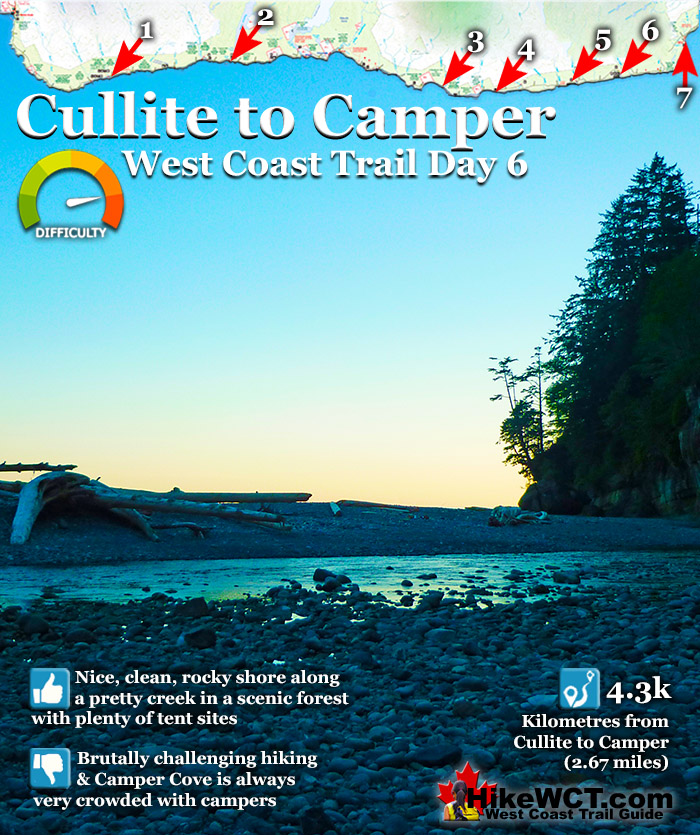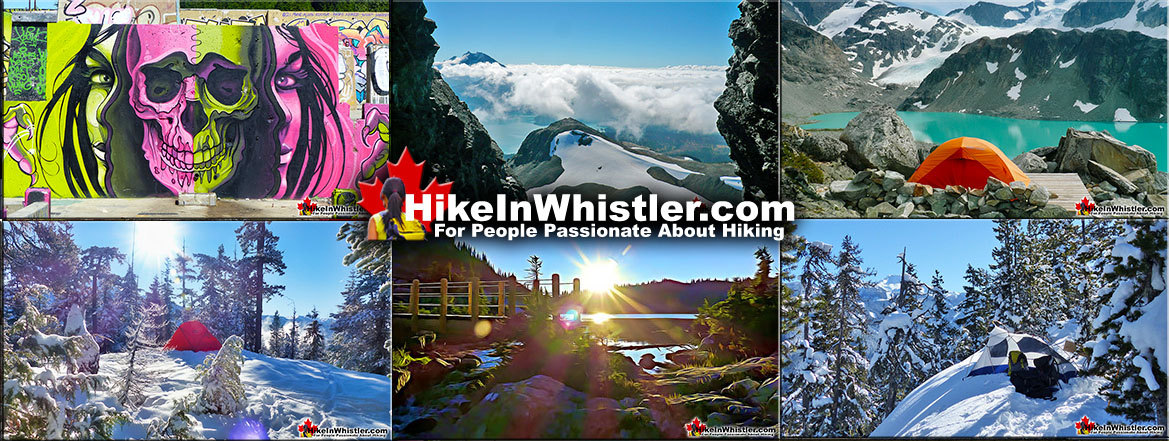![]() Day 6 on the West Coast Trail is another short, yet brutally challenging day hiking between Cullite Cove and Camper Bay. The ladders and mud sections are numerous as you snake your way through the thick rainforest. It is sometimes funny and sometimes worrying to see hikers coming toward you with a look agony and determination. A very fit person will find the trail difficult.
Day 6 on the West Coast Trail is another short, yet brutally challenging day hiking between Cullite Cove and Camper Bay. The ladders and mud sections are numerous as you snake your way through the thick rainforest. It is sometimes funny and sometimes worrying to see hikers coming toward you with a look agony and determination. A very fit person will find the trail difficult.
 Cullite Cove is wonderful to wake up to
Cullite Cove is wonderful to wake up to Jump into the Pacific steps from your tent
Jump into the Pacific steps from your tent Explore up the lovely shore of Cullite Creek
Explore up the lovely shore of Cullite Creek Jump in Cullite Creek before a hard day hiking
Jump in Cullite Creek before a hard day hiking Ladders & hard rainforest hiking are rewarding
Ladders & hard rainforest hiking are rewarding Lots of fun natural bridges & crossings
Lots of fun natural bridges & crossings Brutalized rainforest is entertaining to hike
Brutalized rainforest is entertaining to hike The toughest hiking is soon behind you
The toughest hiking is soon behind you Brutally challenging rainforest hiking
Brutally challenging rainforest hiking Camper Bay is always packed with hikers
Camper Bay is always packed with hikers
Hike the West Coast Trail
![]() Prologue
Prologue ![]() 1: The West Coast Trail
1: The West Coast Trail ![]() 2: When to Hike & Fees
2: When to Hike & Fees ![]() 3: Trailheads
3: Trailheads ![]() 4: Getting There
4: Getting There ![]() 5: Considerations
5: Considerations ![]() 6: Campsites
6: Campsites ![]() 7: Shipwrecks
7: Shipwrecks ![]() 8: Routes
8: Routes ![]() Day 1 Pachena to Darling
Day 1 Pachena to Darling ![]() Day 2 Darling to Tsusiat
Day 2 Darling to Tsusiat ![]() Day 3 Tsusiat to Carmanah
Day 3 Tsusiat to Carmanah ![]() Day 4 Carmanah to Walbran
Day 4 Carmanah to Walbran ![]() Day 5 Walbran to Cullite
Day 5 Walbran to Cullite ![]() Day 6 Cullite to Camper
Day 6 Cullite to Camper ![]() Day 7 Camper to Thrasher
Day 7 Camper to Thrasher ![]() Michigan Creek at 12k
Michigan Creek at 12k ![]() Darling River at 14k
Darling River at 14k ![]() Orange Juice Creek at 15k
Orange Juice Creek at 15k ![]() Tsocowis Creek at 16.5k
Tsocowis Creek at 16.5k ![]() Klanawa River at 23k
Klanawa River at 23k ![]() Tsusiat Falls at 25k
Tsusiat Falls at 25k ![]() Cribs Creek at 42k
Cribs Creek at 42k ![]() Carmanah Creek at 46k
Carmanah Creek at 46k ![]() Bonilla Creek at 48k
Bonilla Creek at 48k ![]() Walbran Creek at 53k
Walbran Creek at 53k ![]() Cullite Cove at 58k
Cullite Cove at 58k ![]() Camper Bay at 62k
Camper Bay at 62k ![]() Thrasher Cove at 70k
Thrasher Cove at 70k
An out of shape hiker must find the trail exhausting at every turn. Between Cullite Cove and Camper Bay you pass northbound hikers on their second or third day hiking, and the look they give you in passing reveals a hint of doubt that they can make it. Everybody knows that the trail from the Gordon River trailhead starts off extremely difficult, then gradually gets easier. By the time you reach Walbran Creek at the 53 kilometre mark, you return to beach hiking and escape the maze of ladders and mud pits. One thing that is very endearing about the West Coast Trail is the alternating sections of beach hiking and forest hiking. You emerge from the forest, muddy, sweaty and sometimes bloody and find yourself on a stunning west coast beach. Wild and beautiful, with nobody for miles and the Pacific Ocean stretching beyond the horizon. Before long you will encounter a river or stream to dunk yourself into. Or better yet find one of many waterfalls along the West Coast Trail. There are a few big ones and dozens and dozens of smaller ones tumbling off of short cliffs. These ones require a trick to find because the thick forest tends to hide them back from the beach.
If you hike high on the beach away from the ocean you will have to work harder with every step as you sink into soft sand instead of the harder, moist sand at the water's edge. You will, before long hear the wonderful sound of a waterfall. You follow the faint sound through the curtain of forest and there it is. A channel of water flowing off a rock face just a couple metres above your head. Often the water amounts to a little more than a shower in your house. But when you are exhausted, sweaty, dirty and thirsty, these little waterfalls are terrific to find. Back on the beach hiking for a while on a beautiful sunny day you find yourself in paradise. Every section of beach is quite different. Some are nice sand, some are rocky. Some are filled with life and others you see little life stirring in the shallows. After an hour or two you find yourself longing to get back in the forest. It is the West Coast Trail way of changing the channel and it never gets old.
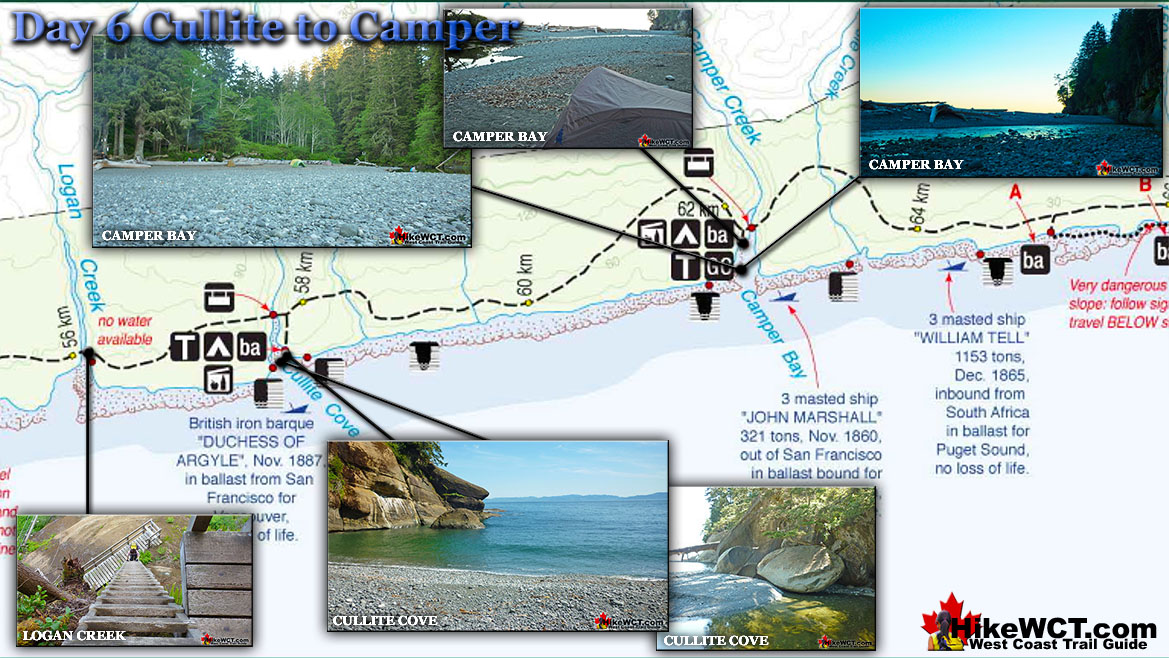
Leaving Cullite Cove at 58km
Leaving Cullite Cove starts with a ridiculously huge set of ladders up into the forest. One tall ladder leads to a platform, then another ladder, then another platform, then another ladder.
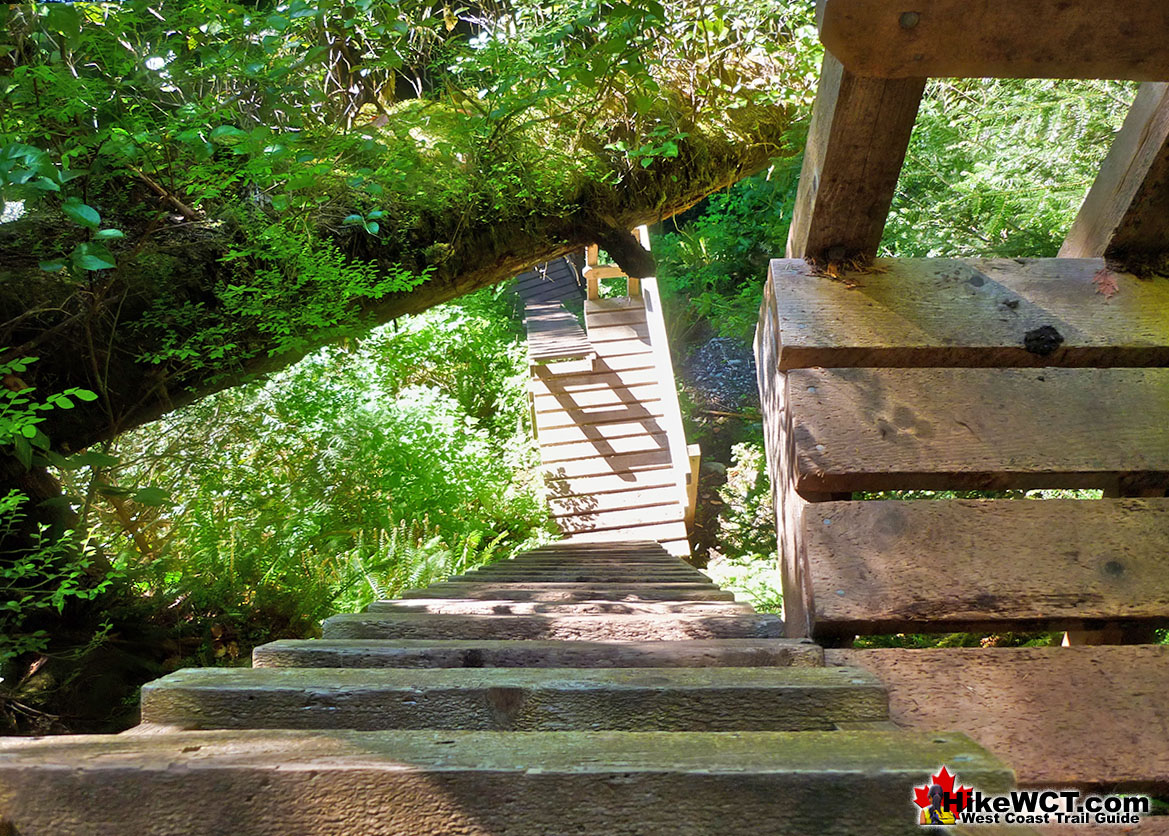
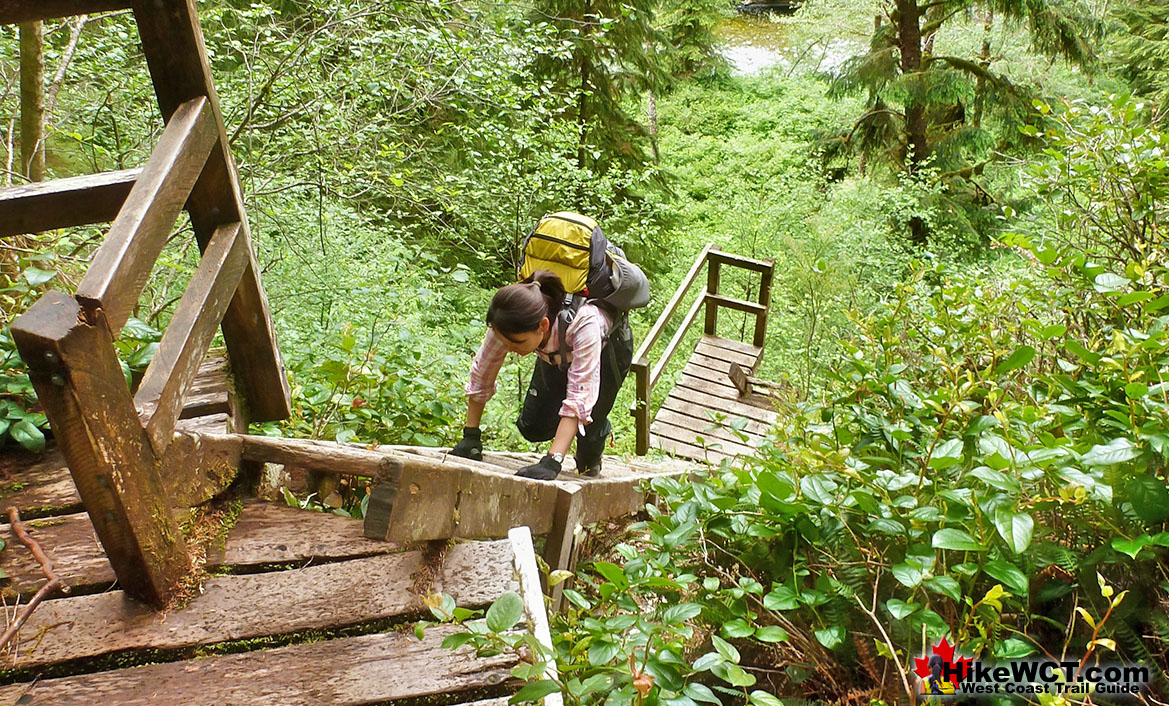
Day 6: Lots of Difficult Rainforest Hiking
On Day 6 hiking Cullite Cove to Camper Bay you don't have any opportunities to walk along the ocean. It is a brutal, yet always entertaining barrage of rainforest obstacles. Ladders, giant fallen trees to crawl over and under. Fallen trees that have been modified to become part of the West Coast Trail by chainsawing steps or flat sections into them so you can walk the length over some chasm. These test your balance and bravery as one slip and you crash down into the forest below. Only a couple metres to fall, but there is always one bit in the middle where the drop is 3 or 4 metres and you have to remind yourself to focus on your next step. There are lots of these on the West Coast Trail and some are a bit more tangled.
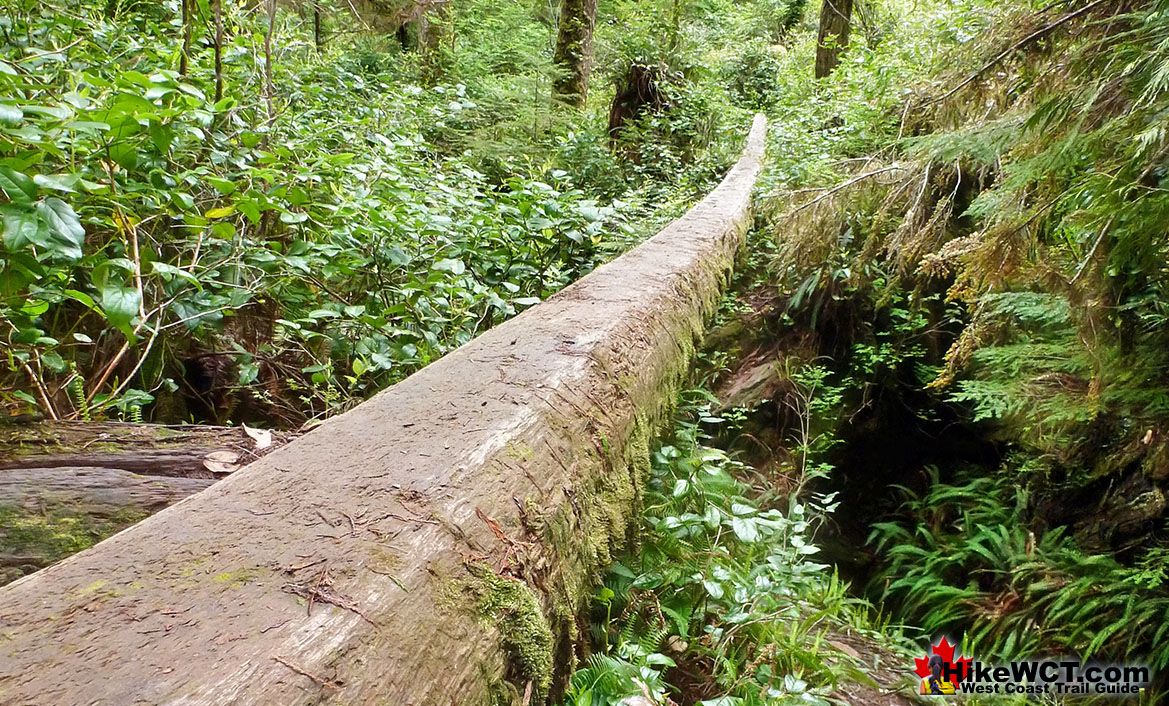
Some crossings are done by crawling over a tangle of trees sprawled over a creek. These are the ones that when first seen you think, they mustn't have had time to clear this crossing yet, busy fixing other parts of the trail. Then you hike the West Coast Trail a year, or two, or three years later and it is still the same! Then you realize the wisdom in leaving it the way it is. A tangled, spider web of fallen trees to be your way across a chasm or creek bed, is pretty amazing. You start to appreciate the rainforest trail carnage and it becomes one more aspect of your love affair with the West Coast Trail.
Mud Pool and Missing Boardwalk at 60km
Some of the mud pools are very impressive and this one almost seems to be arranged this way as a joke. The boardwalk ends at a large pool of mud and the km 60 sign seems too perfectly arranged to be an accident. Such a funny spot on the West Coast Trail and a good snapshot of how the muddy rainforest trail looks like.
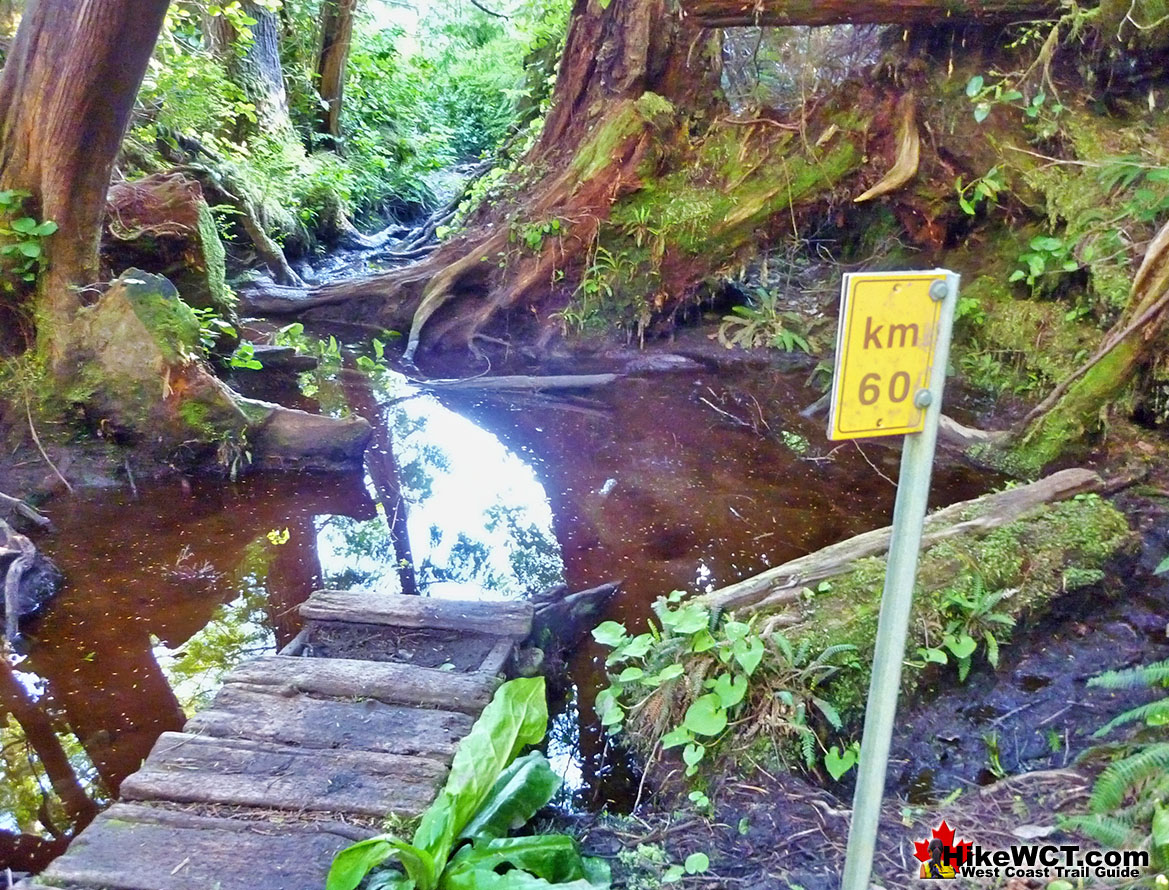
Ancient Boardwalk Near 60km
The cedar boardwalks are found all along the West Coast Trail. Resistant to rot, they last a long time. You do see wear and tear from thousands of hiking boots, but they are surprisingly solid and these ones have probably been here for decades.
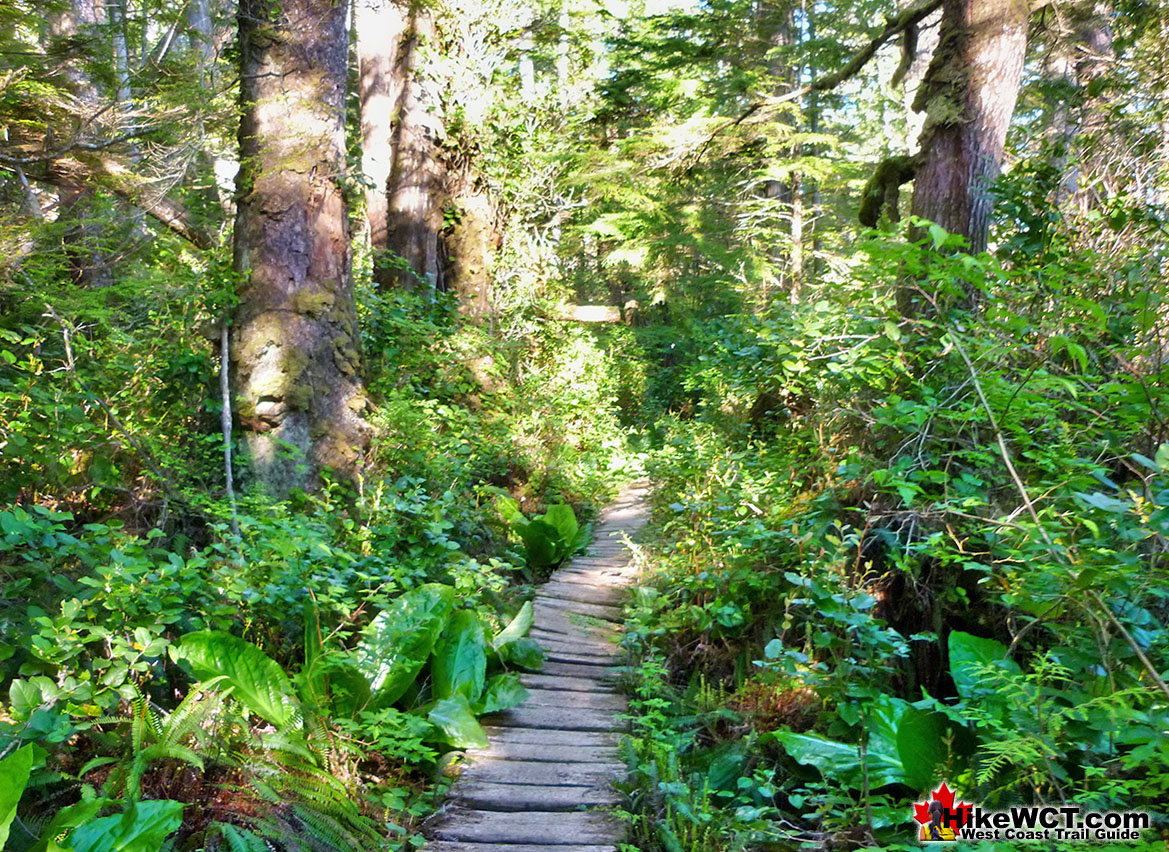
Camper Bay Campsite at 62km
![]() Camper Bay is beautiful, similar to Cullite Cove there are cliffs on either side. The downside is crowding. It's the first really good campsite from the Port Renfrew direction. Still, it's spacious. Another downside is the proximity of Port Renfrew. It's hard to get the wilderness feeling when you can see boats pass every minute and cruise ships in the distance. Camper Bay is often home to quite a number of campers. You always find the campsite lined with tents along the treeline packed so close together as to hear each others conversations. A bit too cosy, but on the other hand, Camper Bay is a great place to socialize with fellow campers. The linear tent site arrangement make it necessary for you and others to walk past several tents to do almost anything. So you get fairly well acquainted with your fellow West Coast Trail hikers. The trail from Camper Bay in both directions is pretty brutal with ladders and erratic terrain, so you and your fellow campers with be exhausted.
Camper Bay is beautiful, similar to Cullite Cove there are cliffs on either side. The downside is crowding. It's the first really good campsite from the Port Renfrew direction. Still, it's spacious. Another downside is the proximity of Port Renfrew. It's hard to get the wilderness feeling when you can see boats pass every minute and cruise ships in the distance. Camper Bay is often home to quite a number of campers. You always find the campsite lined with tents along the treeline packed so close together as to hear each others conversations. A bit too cosy, but on the other hand, Camper Bay is a great place to socialize with fellow campers. The linear tent site arrangement make it necessary for you and others to walk past several tents to do almost anything. So you get fairly well acquainted with your fellow West Coast Trail hikers. The trail from Camper Bay in both directions is pretty brutal with ladders and erratic terrain, so you and your fellow campers with be exhausted.
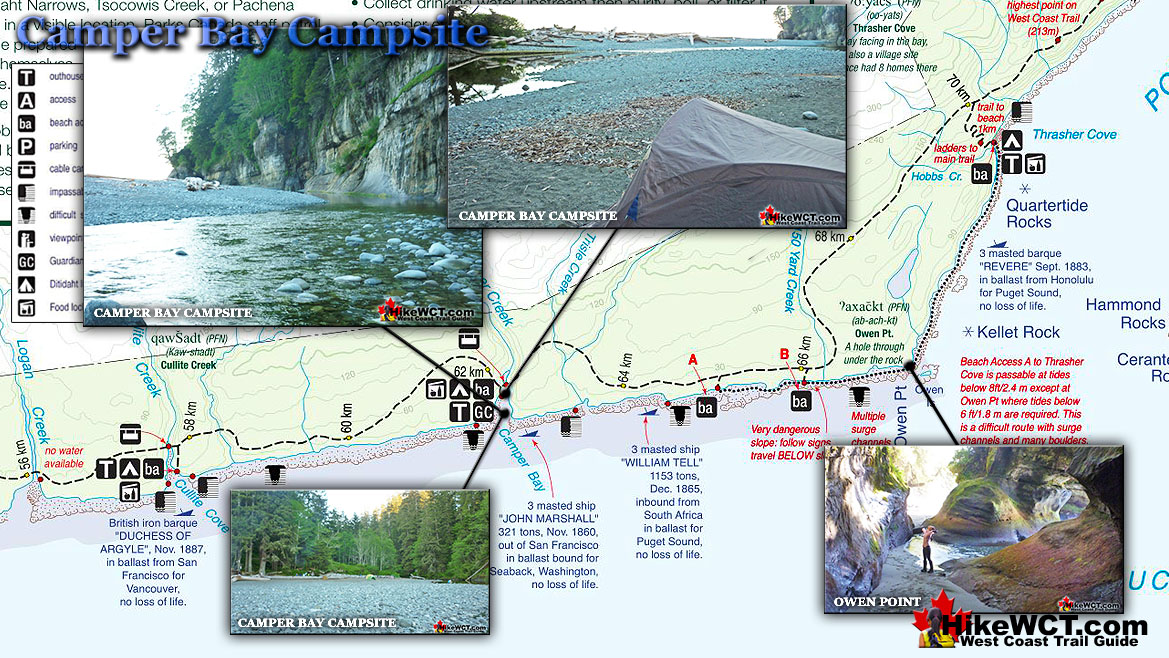
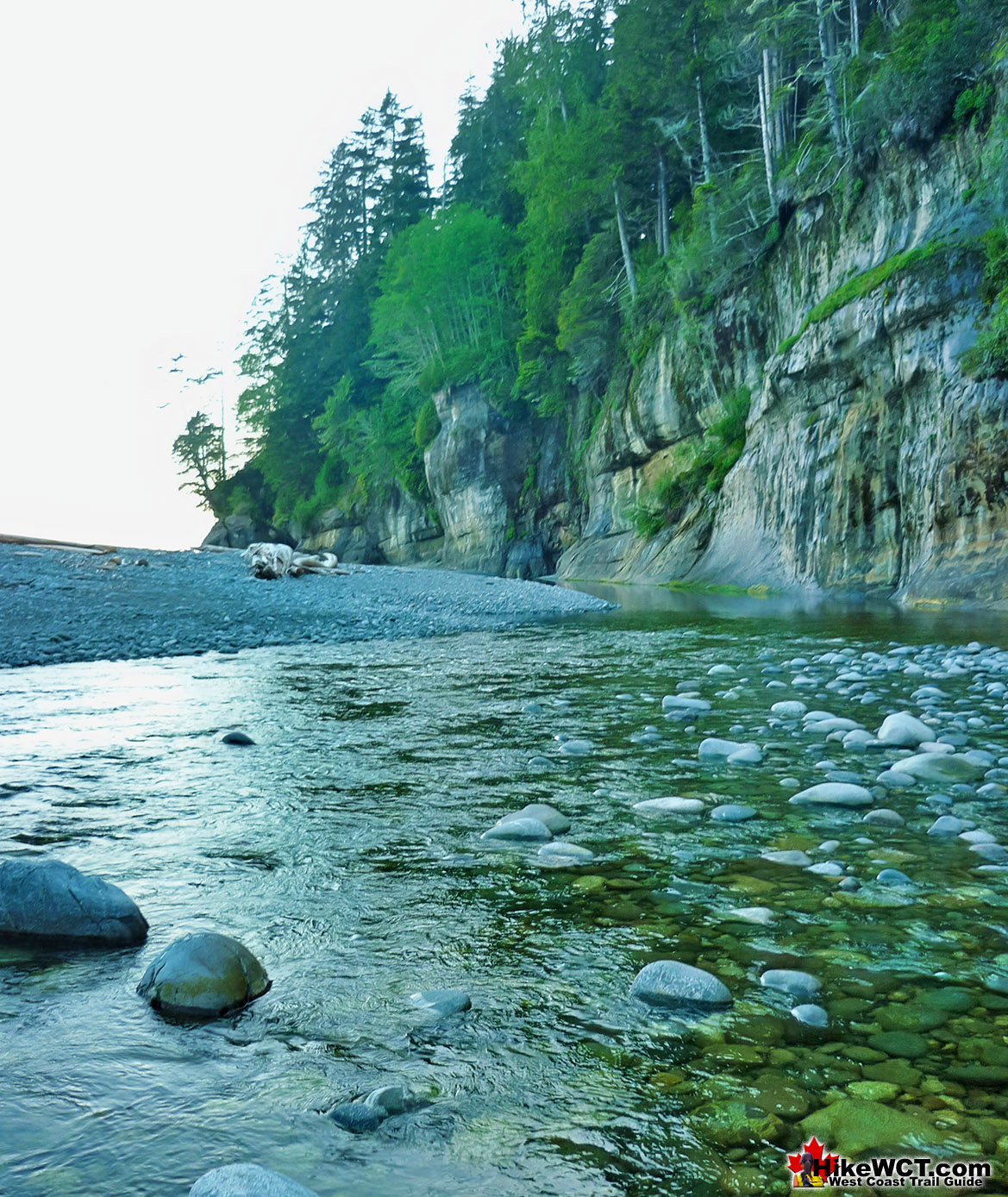

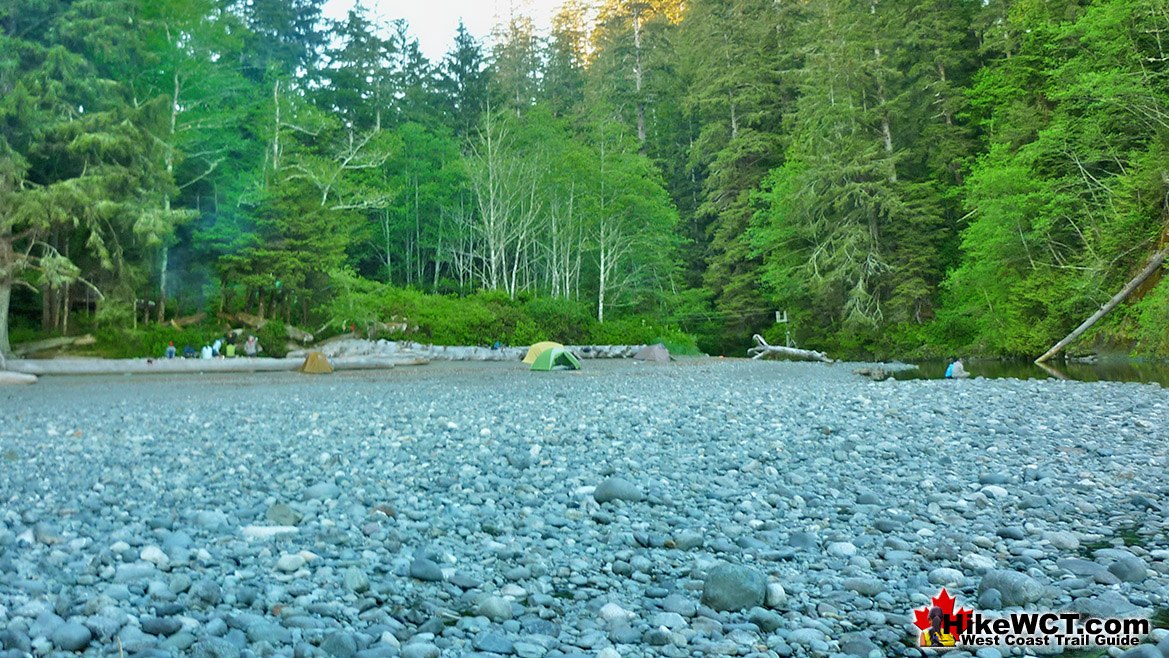
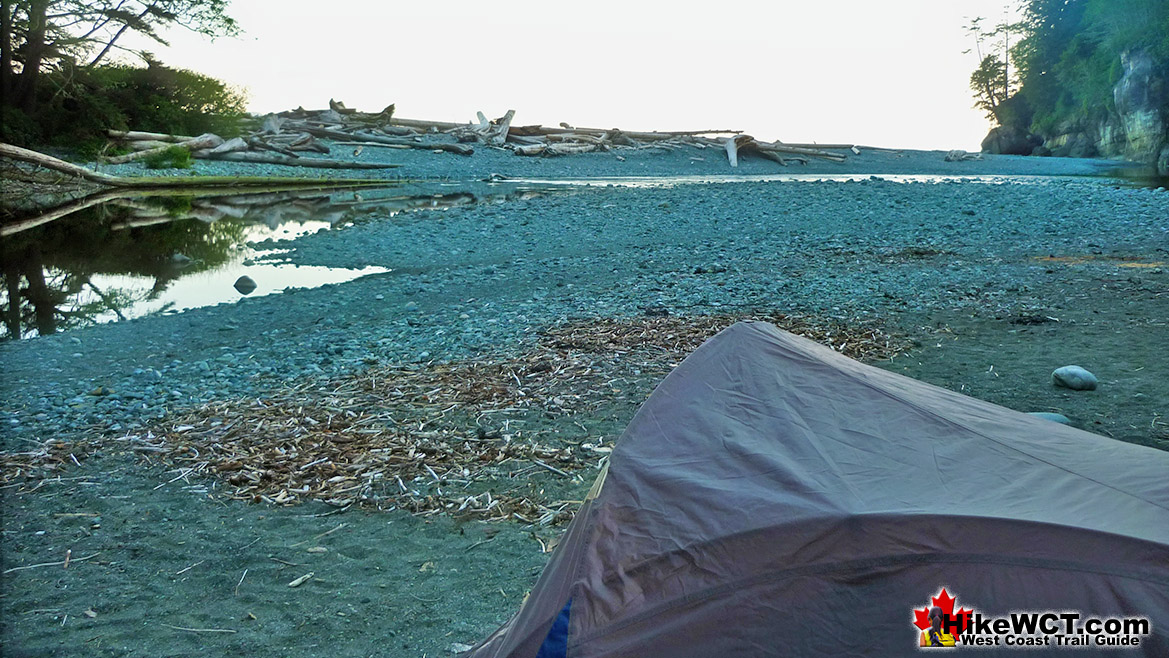
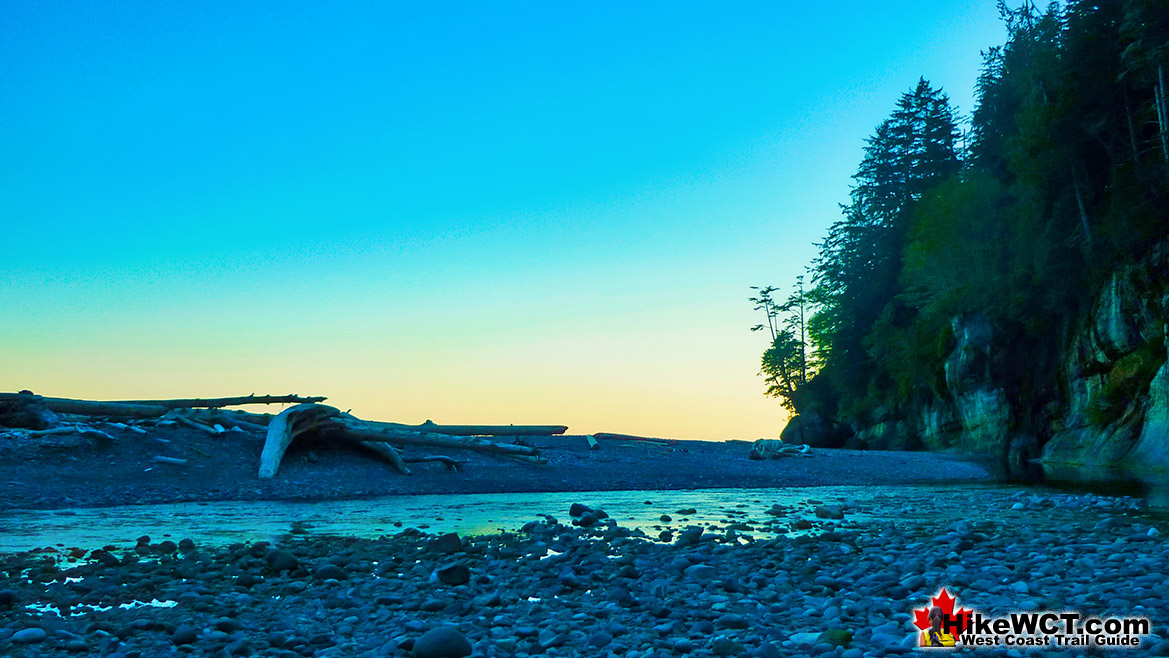
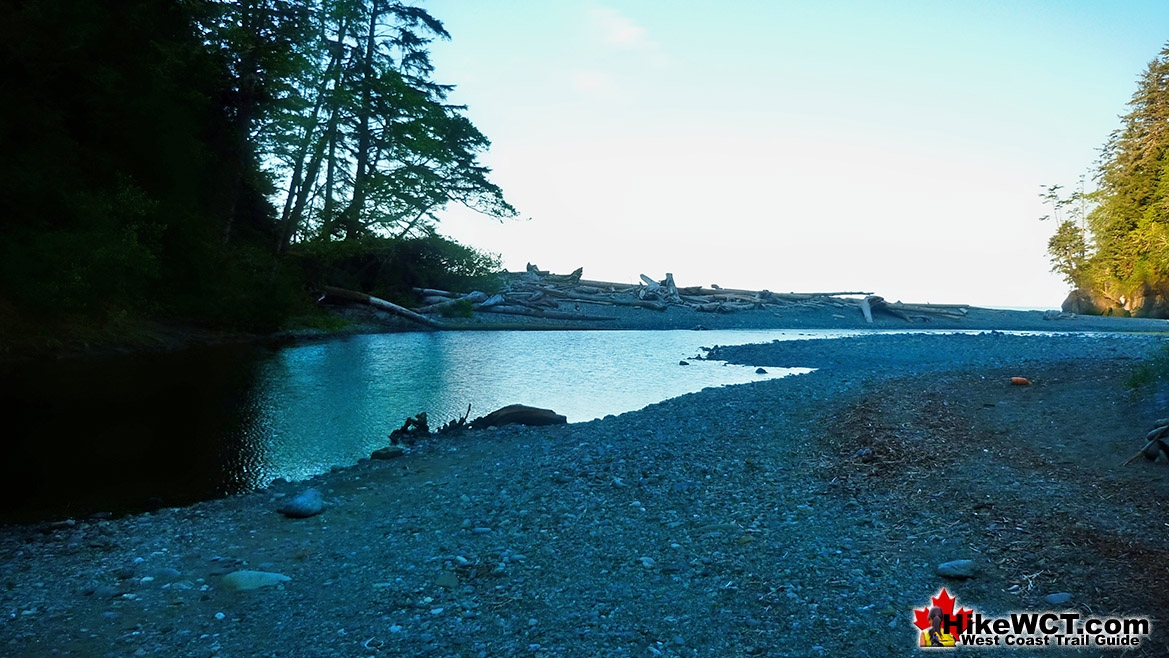
The John Marhshall Shipwreck at Camper Bay at 62.2k
![]() The John Marshall shipwreck is located under the waves just outside the mouth of Camper Bay at the 62 kilometre mark of the West Coast Trail. Owing to the great difficulty and slow progress hikers are forced to take on this section of the West Coast Trail, nearly everyone camps at Camper Bay. If you do, you will be sleeping near this shipwreck that occurred here in 1860. The John Marshall was an old eastern built, 3 masted ship of 321 tons. Sailing in from San Francisco with a crew of 10, she was heading to Seabeck, Washington in ballast to pick up a load of lumber. Off Cape Flattery the John Marshall met a raging storm that left her beached in front of Camper Bay. There seem to be few details of this shipwreck, however, local natives reported that two ships came ashore from the storm that night. It had been assumed that she foundered off Cape Flattery with no survivors. So it was quite a surprise to find her ashore at Camper Bay, with her hull visible at low tide and her masts, spars and rigging scattered on the beach. There are no details of deaths from this shipwreck, so it is assumed that there was no loss of life.
The John Marshall shipwreck is located under the waves just outside the mouth of Camper Bay at the 62 kilometre mark of the West Coast Trail. Owing to the great difficulty and slow progress hikers are forced to take on this section of the West Coast Trail, nearly everyone camps at Camper Bay. If you do, you will be sleeping near this shipwreck that occurred here in 1860. The John Marshall was an old eastern built, 3 masted ship of 321 tons. Sailing in from San Francisco with a crew of 10, she was heading to Seabeck, Washington in ballast to pick up a load of lumber. Off Cape Flattery the John Marshall met a raging storm that left her beached in front of Camper Bay. There seem to be few details of this shipwreck, however, local natives reported that two ships came ashore from the storm that night. It had been assumed that she foundered off Cape Flattery with no survivors. So it was quite a surprise to find her ashore at Camper Bay, with her hull visible at low tide and her masts, spars and rigging scattered on the beach. There are no details of deaths from this shipwreck, so it is assumed that there was no loss of life.
West Coast Trail Day 7: Camper to Thrasher
The West Coast Trail by Day
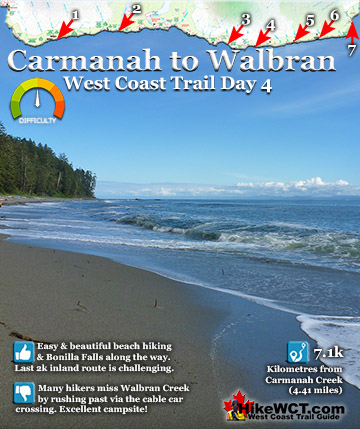
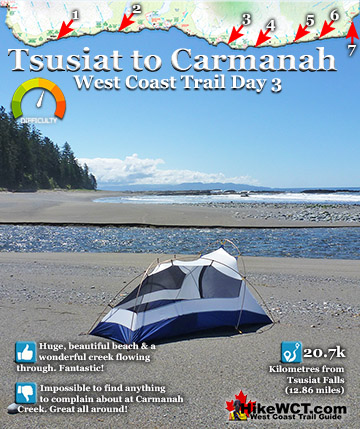
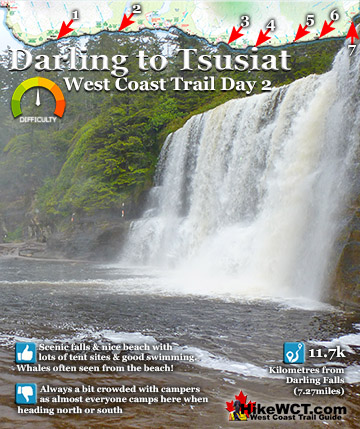
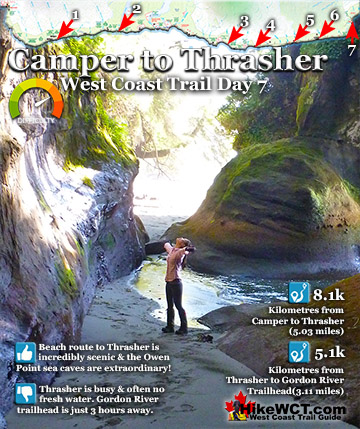
West Coast Trail Campsites
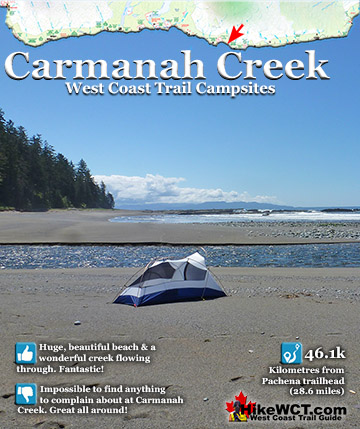
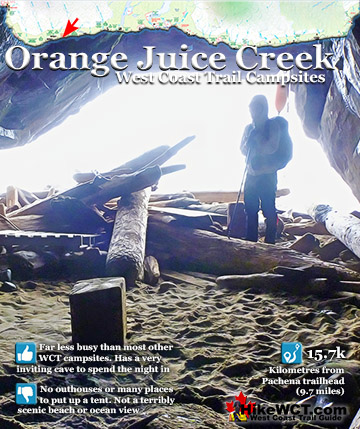
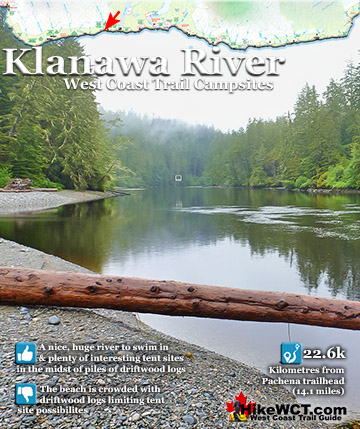
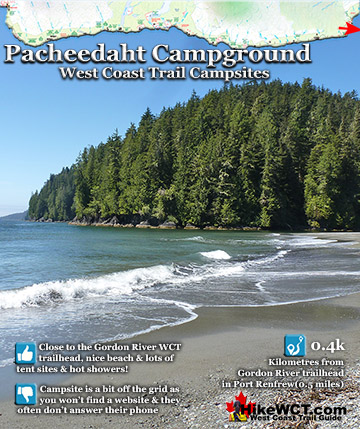
The Valencia Disaster
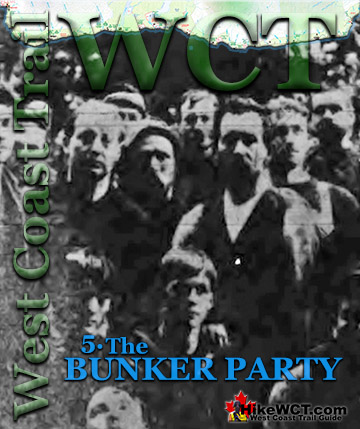
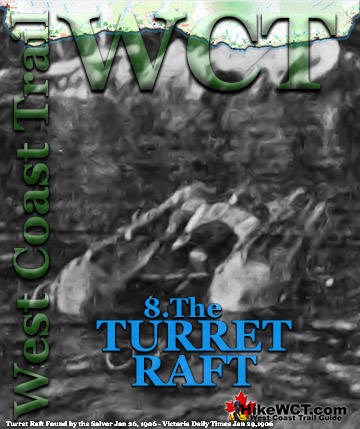
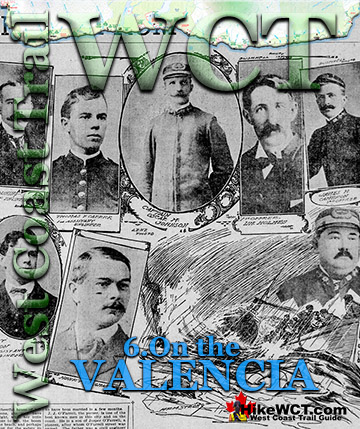
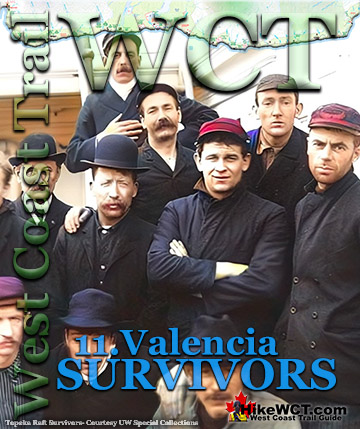
Explore BC Hiking Destinations!
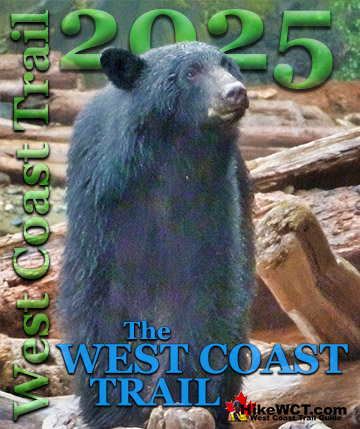
The West Coast Trail
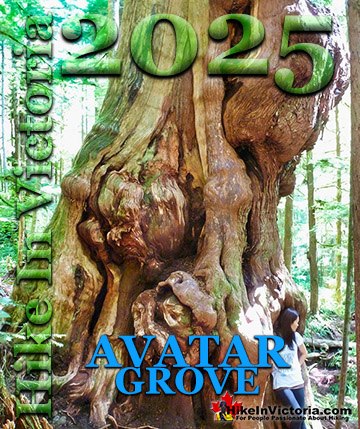
Victoria Hiking Trails
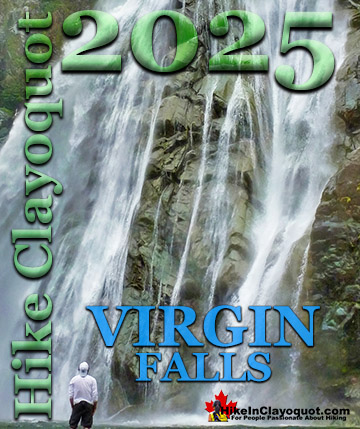
Clayoquot Hiking Trails
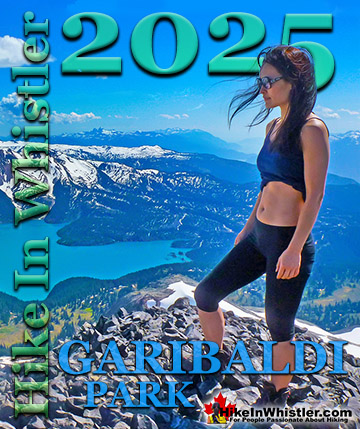
Whistler Hiking Trails
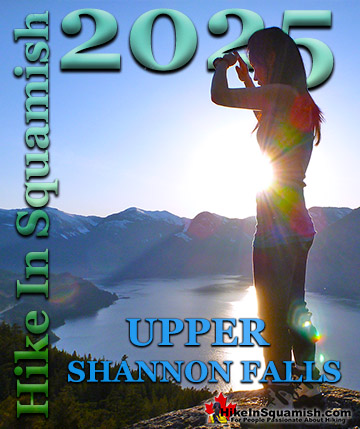
Squamish Hiking Trails

Vancouver Hiking Trails

